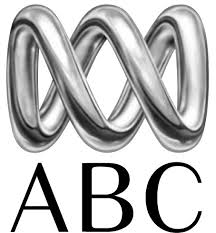Money for indigenous education unspent
Below is an article by Stephanie Peatling for the Syndey Morning Herald that we thought was worth sharing with you all ok. Enjoy.
LESS than half the money the Federal Government allocated for indigenous education programs last year was spent, at a time the Prime Minister, John Howard, has named "practical reconciliation" as a goal for attention.
Although $225 million was earmarked for programs such as literacy and numeracy - in which indigenous students lag behind other students - only $83 million was spent.
"The evidence of underspending in indigenous education shows this Government has no strategy and displays even less initiative in the critical area of educating indigenous young people," said the Opposition's indigenous affairs spokesman, Chris Evans..
"All we see from this Government is shameless self-promotion and worsening outcomes for indigenous education."
The figures are in a 127-page document that took the Department of Education, Science and Training a year to prepare after being asked by the Opposition for a breakdown of its spending.
The document also shows that payments made to indigenous students taking tertiary courses and receiving the Abstudy allowance dropped by 35 per cent.
The underspending came as the Federal Government was revamping the way it managed indigenous policy, including abolishing the Aboriginal and Torres Strait Islander Commission, as part of so-called mainstreaming of funding for indigenous programs.
A report on indigenous education prepared by the state and federal governments last year found that while retention rates to year 12 had increased slightly, indigenous students were still half as likely to continue to year 12 as non-indigenous students. Numeracy and literacy levels are much lower in all age groups.
The figures showing the lack of spending came as Mr Howard said education was a key issue in improving the living standards of indigenous people.
"This is practical reconciliation at its best because unless Aboriginal children have education their employment opportunities are going to be limited, and unless they can get jobs they can't be fully enjoying the benefits of Australian society," he said yesterday.
Although school participation rates had improved among indigenous students, Mr Howard said there was "still a long way to go".
The $142 million not spent by the Government was part of funding for the Indigenous Education Strategic Initiatives.
The department acknowledged there had been a "significant" lack in spending, and this was due to agreements with state and Catholic education authorities not being finalised.
"Also, a large number of Indigenous Education project payments, expected to be made in the first half of 2005, have not eventuated, due either to contracts still being negotiated or outstanding compliance issues," the department said.
It said the money was expected to be spent in the firsthalf of this year.
LESS than half the money the Federal Government allocated for indigenous education programs last year was spent, at a time the Prime Minister, John Howard, has named "practical reconciliation" as a goal for attention.
Although $225 million was earmarked for programs such as literacy and numeracy - in which indigenous students lag behind other students - only $83 million was spent.
"The evidence of underspending in indigenous education shows this Government has no strategy and displays even less initiative in the critical area of educating indigenous young people," said the Opposition's indigenous affairs spokesman, Chris Evans..
"All we see from this Government is shameless self-promotion and worsening outcomes for indigenous education."
The figures are in a 127-page document that took the Department of Education, Science and Training a year to prepare after being asked by the Opposition for a breakdown of its spending.
The document also shows that payments made to indigenous students taking tertiary courses and receiving the Abstudy allowance dropped by 35 per cent.
The underspending came as the Federal Government was revamping the way it managed indigenous policy, including abolishing the Aboriginal and Torres Strait Islander Commission, as part of so-called mainstreaming of funding for indigenous programs.
A report on indigenous education prepared by the state and federal governments last year found that while retention rates to year 12 had increased slightly, indigenous students were still half as likely to continue to year 12 as non-indigenous students. Numeracy and literacy levels are much lower in all age groups.
The figures showing the lack of spending came as Mr Howard said education was a key issue in improving the living standards of indigenous people.
"This is practical reconciliation at its best because unless Aboriginal children have education their employment opportunities are going to be limited, and unless they can get jobs they can't be fully enjoying the benefits of Australian society," he said yesterday.
Although school participation rates had improved among indigenous students, Mr Howard said there was "still a long way to go".
The $142 million not spent by the Government was part of funding for the Indigenous Education Strategic Initiatives.
The department acknowledged there had been a "significant" lack in spending, and this was due to agreements with state and Catholic education authorities not being finalised.
"Also, a large number of Indigenous Education project payments, expected to be made in the first half of 2005, have not eventuated, due either to contracts still being negotiated or outstanding compliance issues," the department said.
It said the money was expected to be spent in the firsthalf of this year.

















0 Comments:
Post a Comment
<< Home